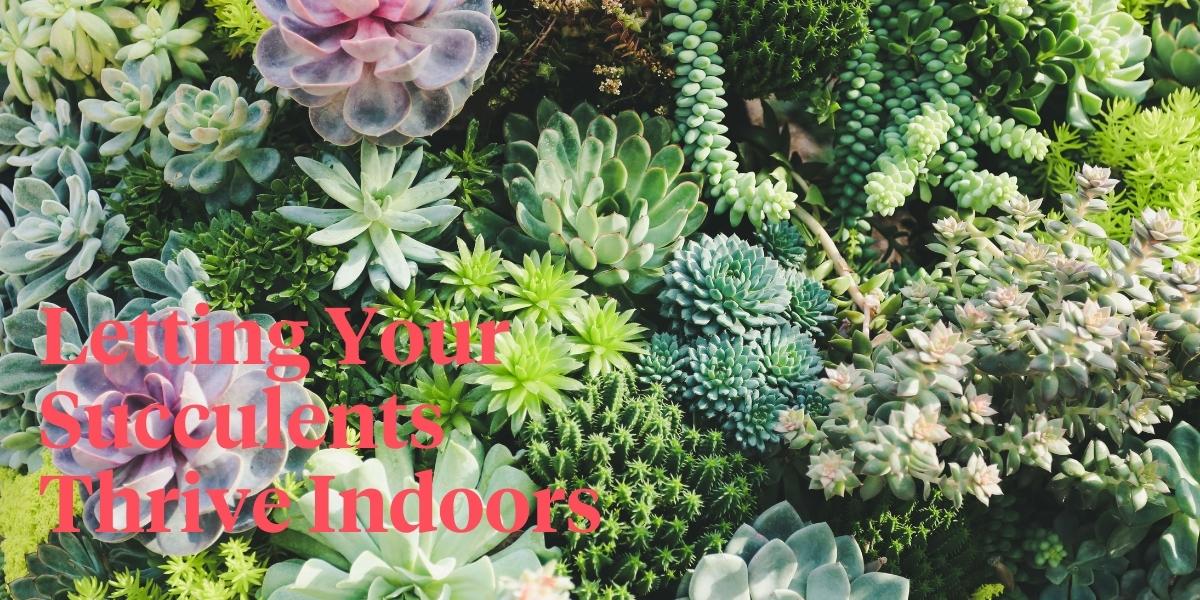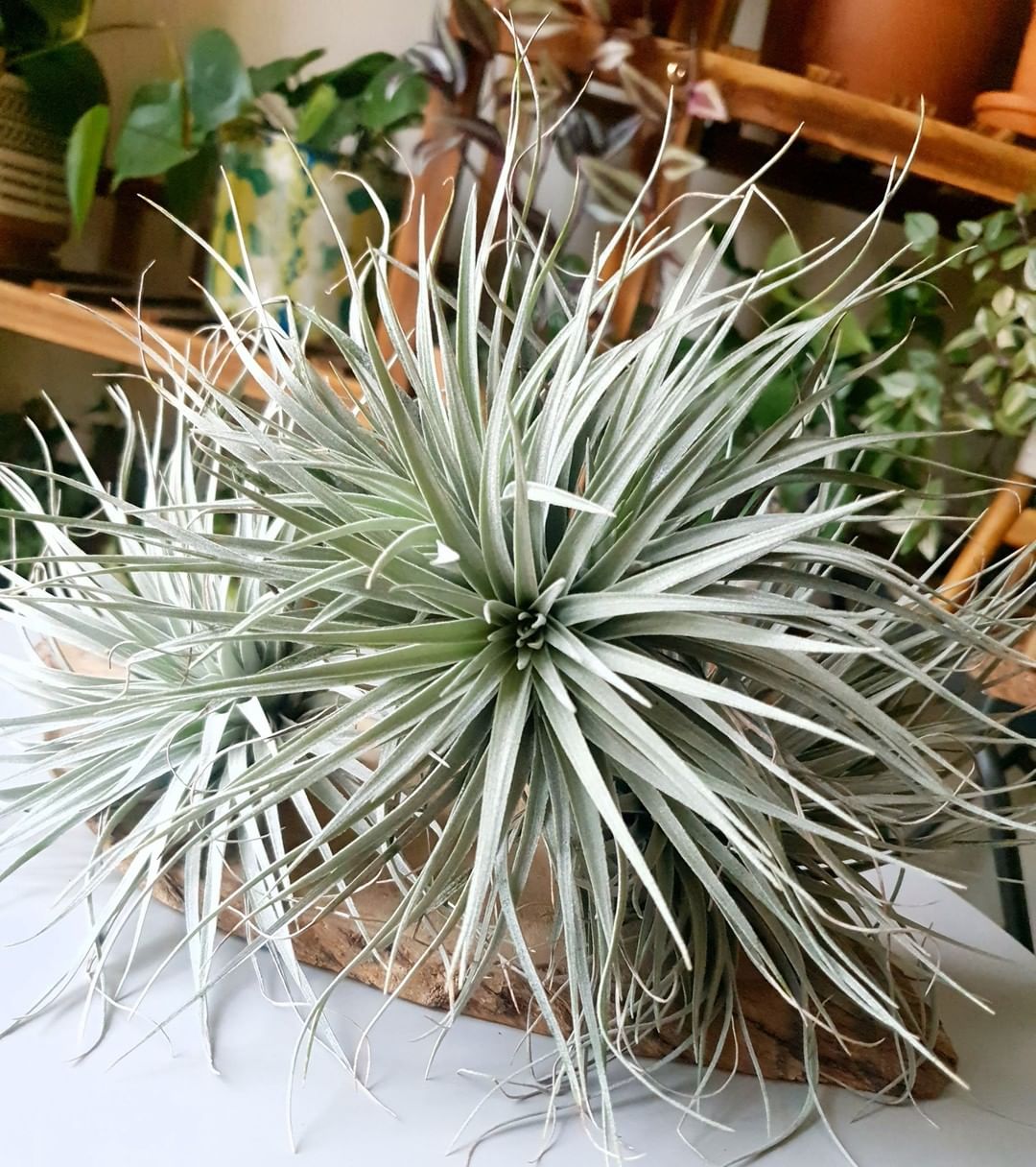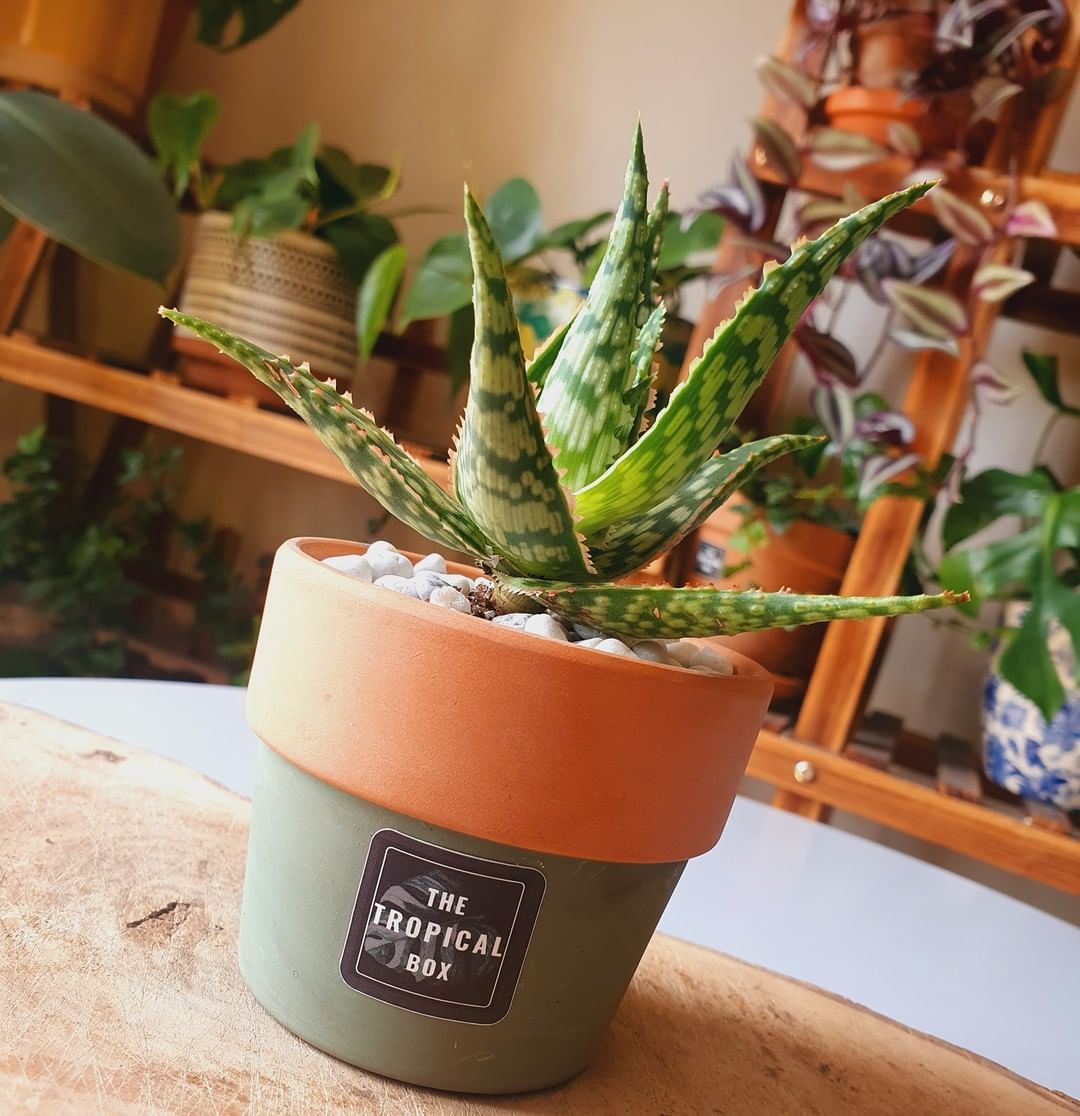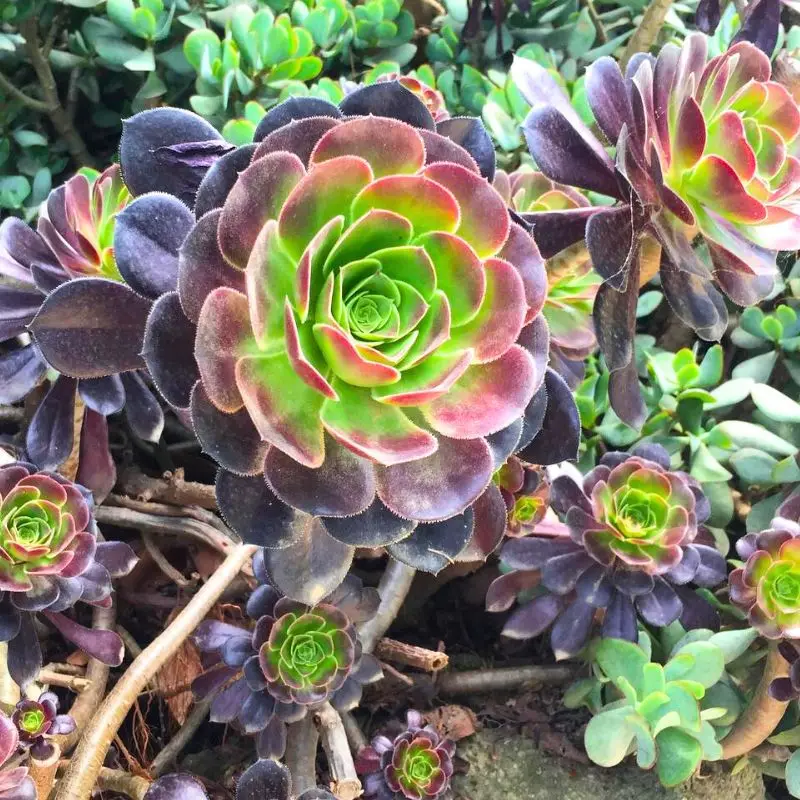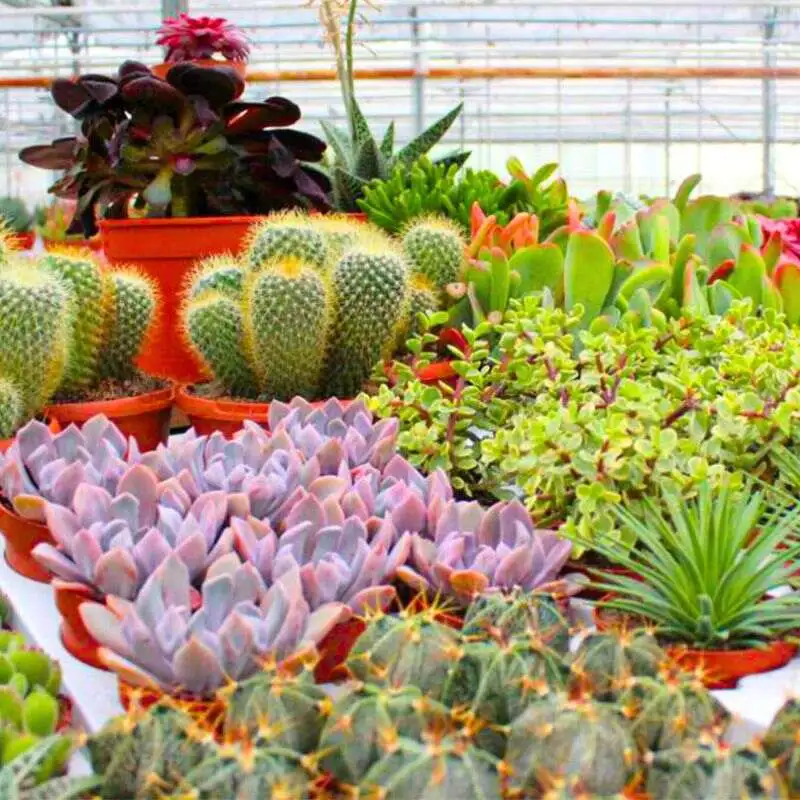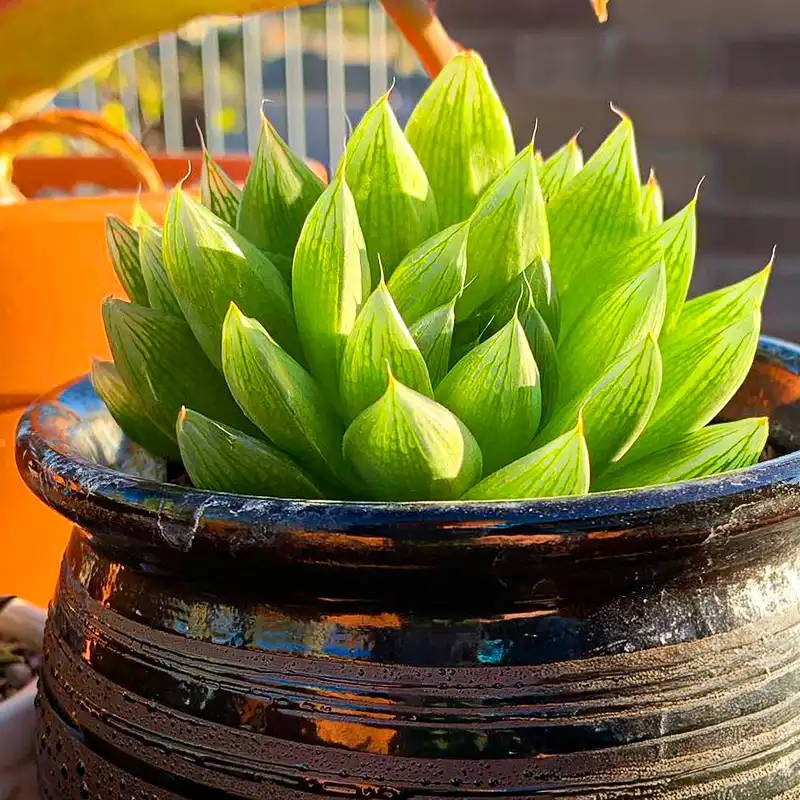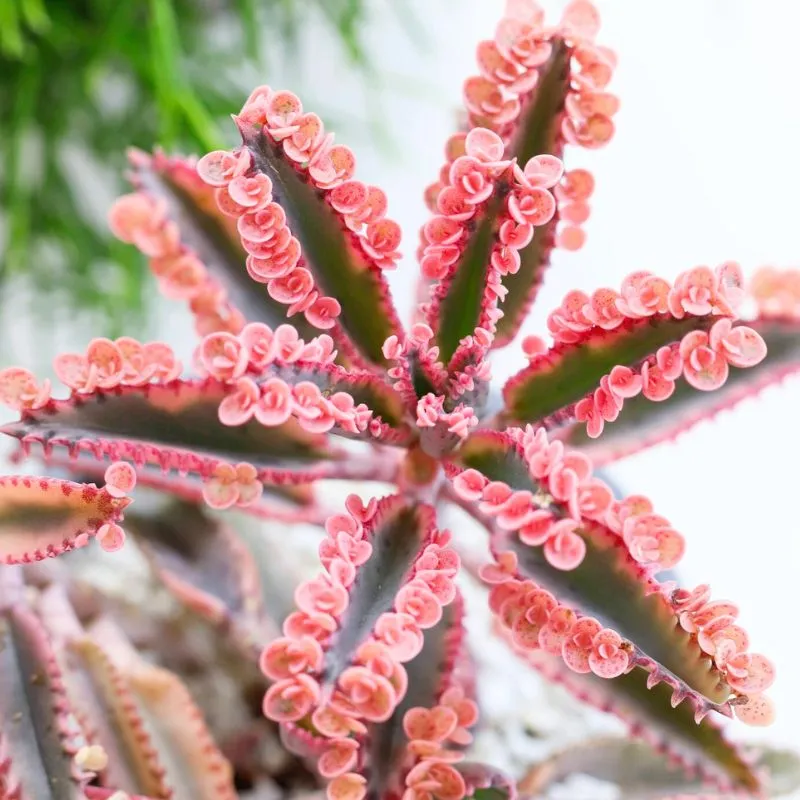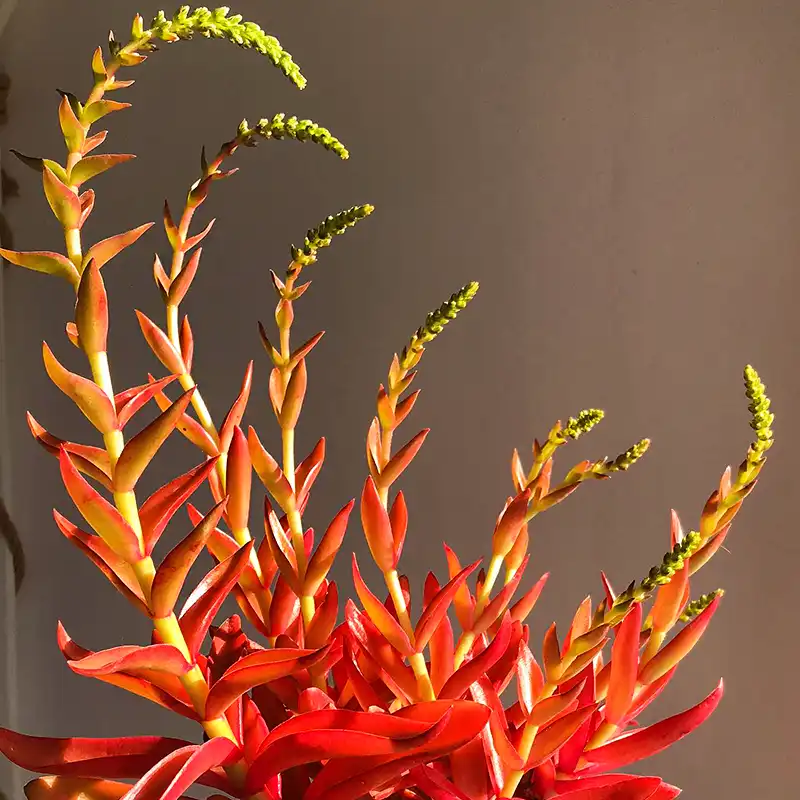Pretty much everyone who enjoys houseplants, or gardening in general, is familiar with succulents. But even if you don't know what they are, you have probably seen them before. Succulents come in all shapes and sizes; from giant ones in desert landscaping to those uber-cute mini succulents in tiny planters - they are just flying off the pages of every design magazine and plant website.
How to Care for Succulents - And Not Kill Them
And rightfully so! Succulents are fantastically versatile but as cute as they are, they don't always make the best houseplants. But that doesn't mean you shouldn't grow them. This post will teach you exactly how to grow beautiful, healthy succulents indoors. The succulent care guide will walk you through everything you need to know about how to grow and care for these wondrous plants.
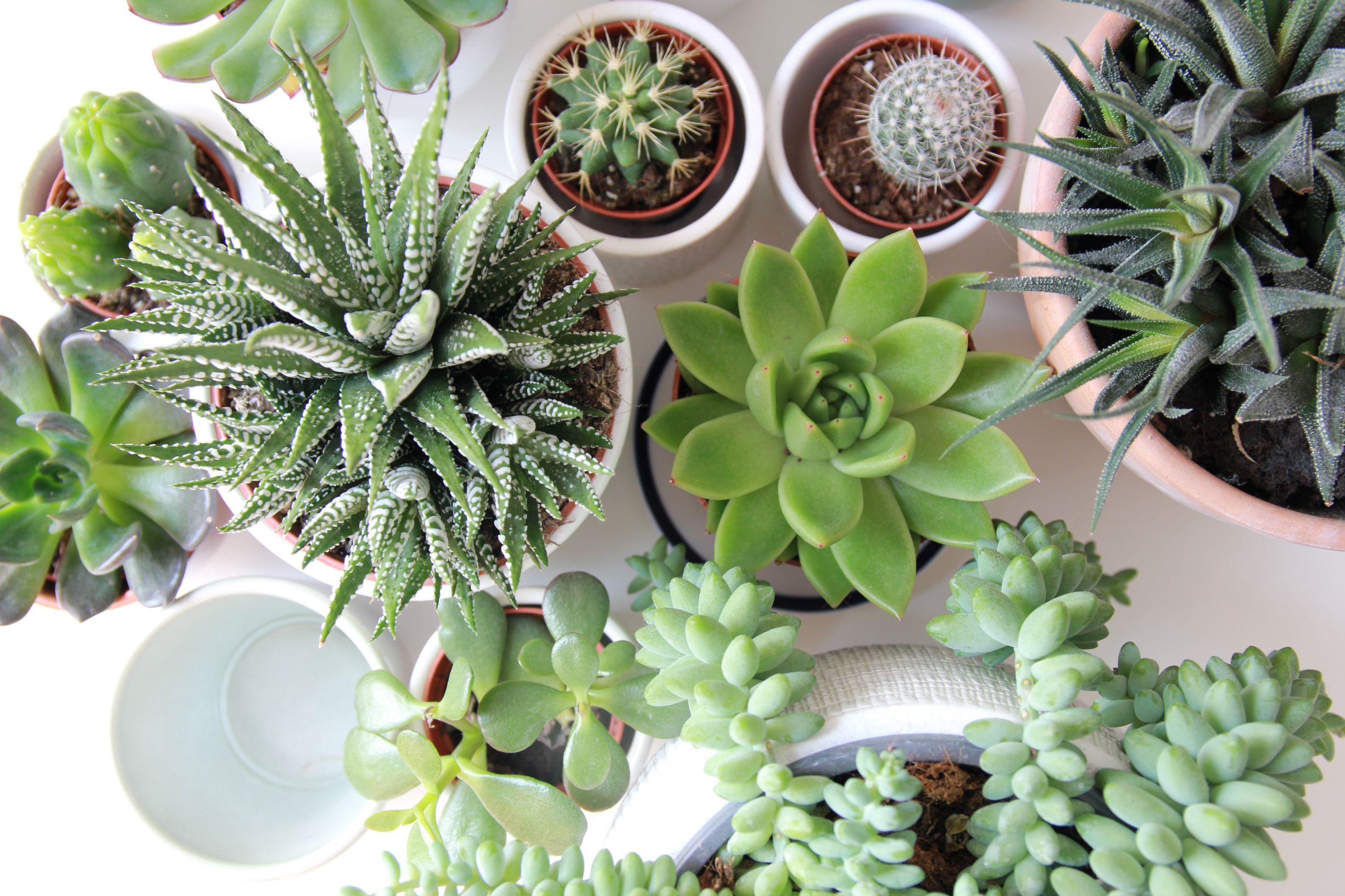
Succulent Care at Different Levels of Gardening Expertise
If you’re new to caring for plants in general or an avid gardener looking to add succulents to your repertoire, read on for answers to the most commonly asked questions in regard to succulent care, so you too can reap all those wonderful gardening benefits. Just bear in mind that while being relatively resilient in life forms, like all others, they can fail if not given proper attention. Succulents are rather unique in terms of how they store and use their water supply and yet there are plants in sixty different categories that would be considered one. This means, once you’ve gotten the hang of succulent care in general, just think of all the different kinds you could add to your collection!
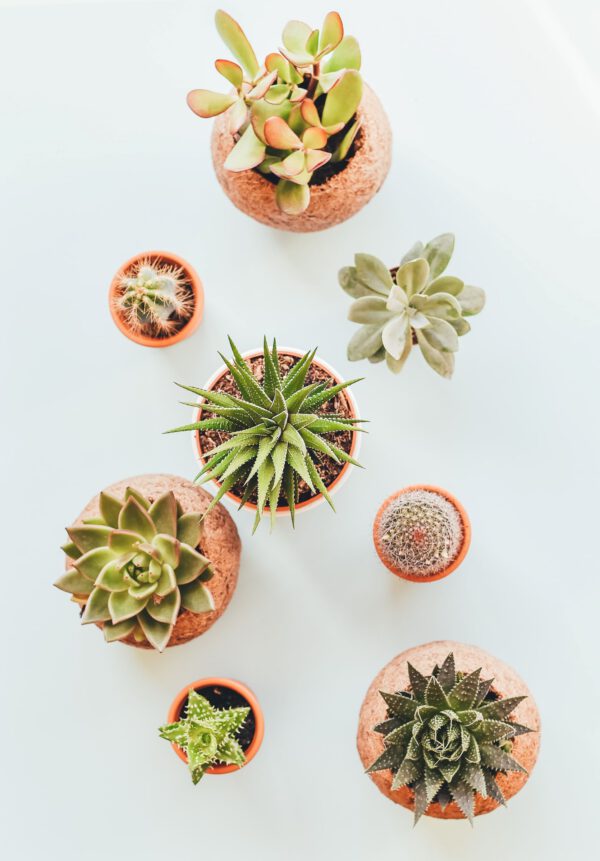
Make Sure Your Succulents Get Enough Light
Succulents love light and need about six hours of sun per day, depending on the type of succulent. Newly planted succulents can scorch in direct sunlight, so you may need to gradually introduce them to full sun exposure or provide shade with a sheer curtain. Succulents love the direct sun, but if yours is sitting in the same exact spot day after day, it's likely that only one side is getting enough light. Rotate your plants often. Succulents will lean towards the sun, so rotating them will help them stand up straight. (Leaning may also be a sign that they need to be in a sunnier spot.
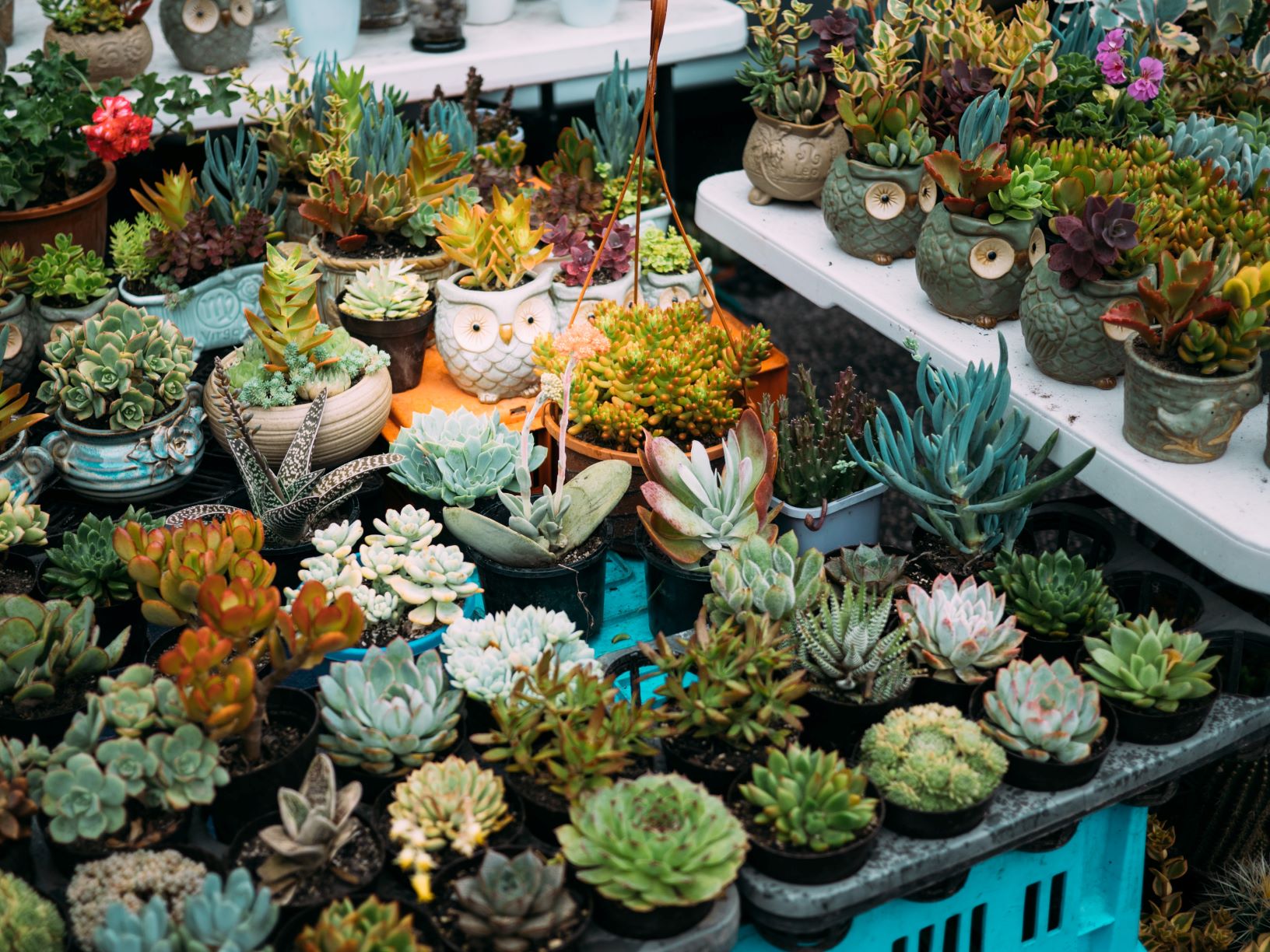
When to Water Succulents
The goal of good succulent care is to try to mimic the natural, environmental conditions in which these plants grow in the wild. But, because conditions in each of our homes vary, it’s a good idea to let your plants tell you when they need watering rather than wait for a specific day on the calendar. Let the soil completely dry out in between watering. To test: squeeze a bit of soil between your fingers. If it crumbles, it needs water. If the soil sticks together, this is due to the presence of water. Wait a day or two more before adding more. Water your succulents well until you start to see a decent amount draining from the bottom. Then you know your plant is nice and soaked and will need to fully dry out before it's ready for more.
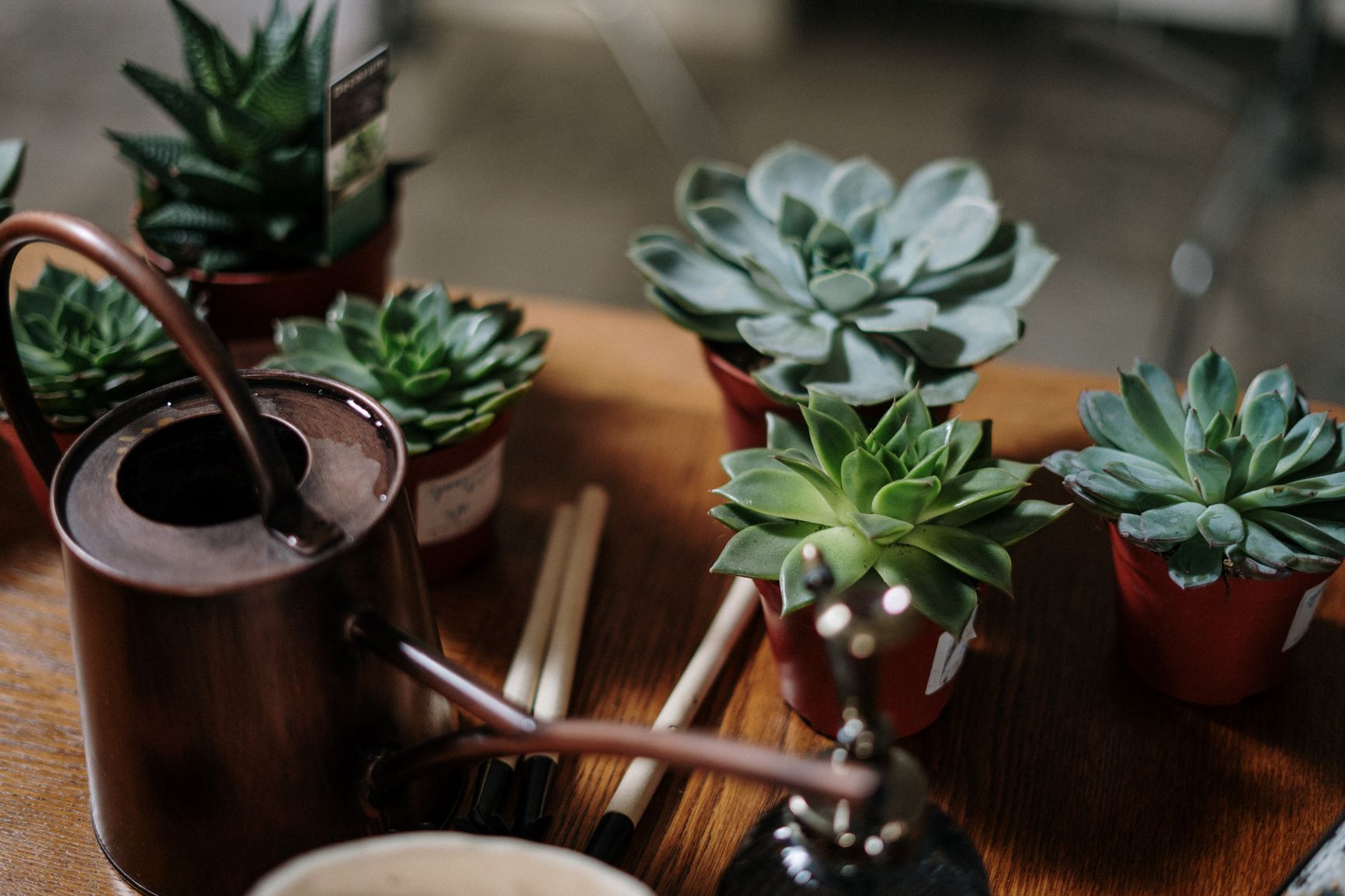
During warmer months, your succulents will most likely tell you they’re thirsty more often as they tend to drink up the provided water more quickly. During cooler months, the speed of water absorption slows down together with the growth rate of the plant itself. Cliff notes: More water in summer, less in winter.
Keep the Bugs Away
If you are following healthy practices for your succulents as indoor house plants (proper watering, well-draining soil, light, airflow, etc.), bugs are generally not a problem. But if you happen to purchase a plant with bugs already, they can easily become a big headache.
A common bug new growers encounter is gnats. Generally, you'll only get gnats if your soil stays too wet. Gnats are generally avoidable by using a well-draining soil mix and allowing your soil to dry out between watering. Another bug that surfaces all too often is mealy bugs. They are nasty white little guys that hold on to your succulents for dear life. If you do get mealy bugs, you'll want to spray them with rubbing alcohol and pour alcohol over the soil to kill any eggs they may have laid.
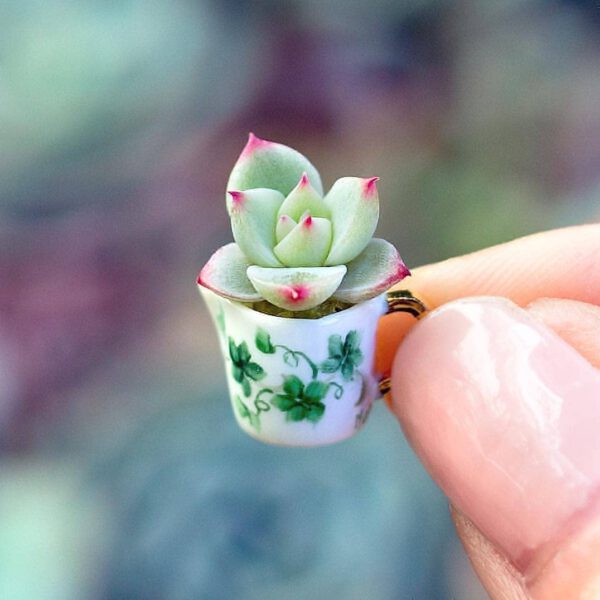
Extra Succulent Care Tips
- Keep them clean - Your indoor plants will gradually pick up dust on their surface, which can inhibit their growth. Wipe off the leaves and spines gently with a damp cloth (use a soft paintbrush to get at hard-to-reach spots).
- Choose the right container - Succulents don’t like to sit in waterlogged soil, so drainage is important to prevent rot. Your container should have a drainage hole to allow excess water to escape. Terra-cotta pots are ideal for beginners.
- Use the right soil - Succulents need soil that drains, so regular potting soil — or dirt from your yard — won’t do. Choose cactus soil or mix potting soil with sand, pumice, or perlite. Succulent roots are very fragile so be gentle when repotting.
- Fertilize - Succulents don’t need much fertilizer, but you can give them light feedings during the spring and summer growing seasons. Be careful not to overfertilize, since this can cause your succulents to grow too quickly and become weak.
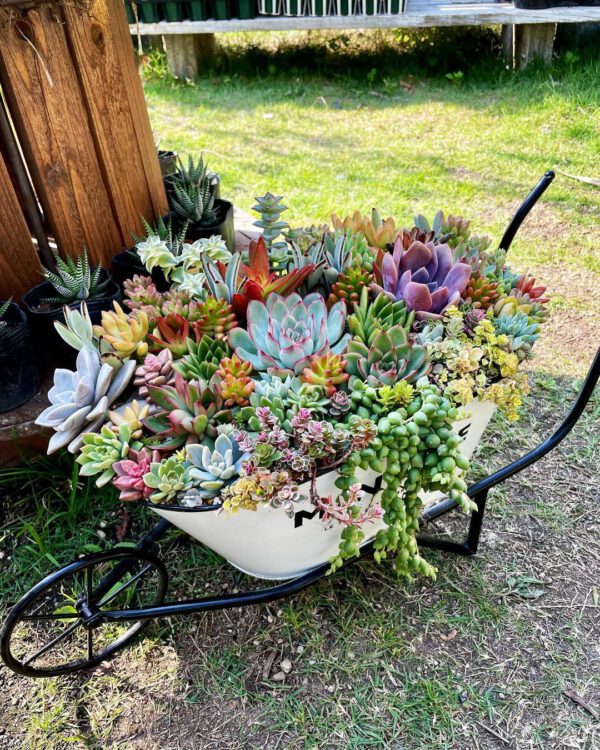
Enjoy Your Plants
The great thing about growing succulents indoors is they'll generally look good for several weeks even if you are a true 'plant killer.' Hopefully, you feel better prepared to take care of your succulents indoors now. But make sure you don't stress too much over succulent care - gardening is supposed to be fun and therapeutic (and your succulent will definitely forgive you if you occasionally forget to water or rotate them).

